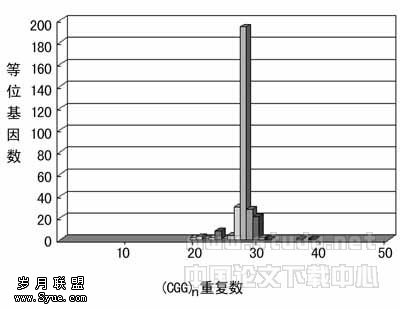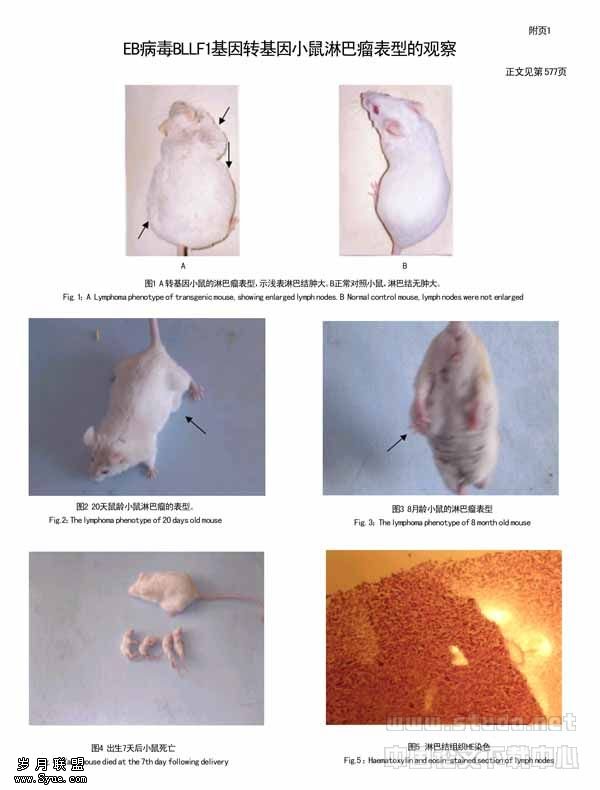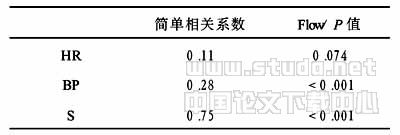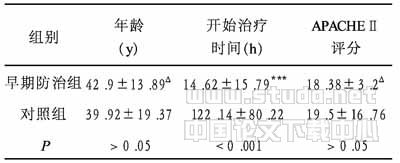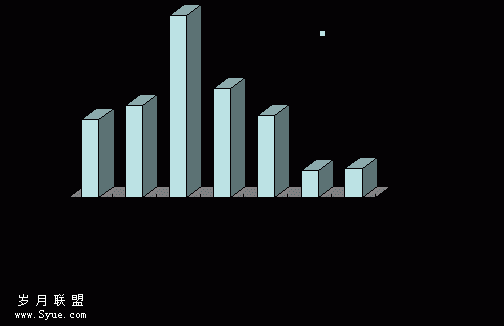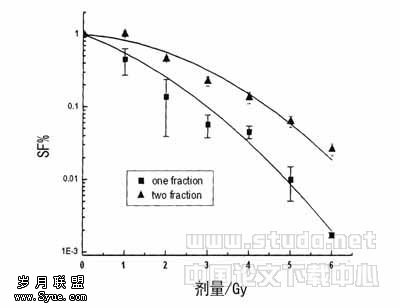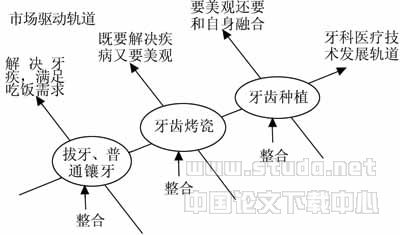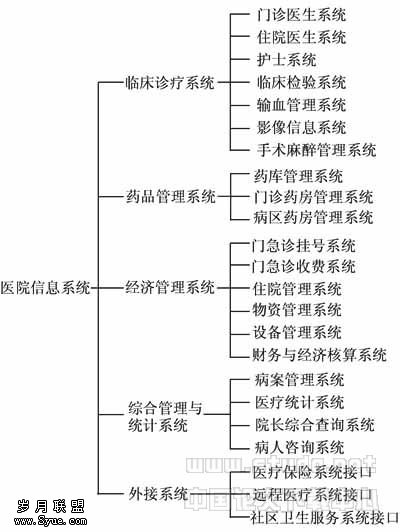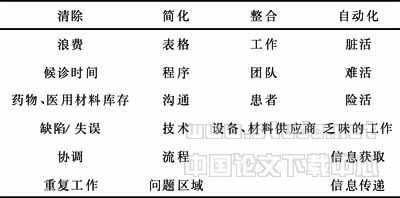人参总皂苷和小檗碱对肺癌PG细胞分泌免疫抑制性细胞因子的影响
作者:郝钰, 王萍, 吴珺, 邱全瑛
【摘要】 目的:观察人参总皂苷(ginsenoside, Gs)和小檗碱(berberine, Ber)对肿瘤细胞分泌免疫抑制性细胞因子转化生长因子β1(transforming growth factor?beta1,TGF?β1)和前列腺素E2(prostaglandin E2,PGE2)的影响,探讨Gs和Ber对肿瘤免疫逃逸的作用机制。方法:首先建立人肺癌PG细胞与人T淋巴细胞株Jurkat细胞的共培养体系,随机分为Gs(100 μg/ml)组、Ber(10 μg/ml)组、空白对照组和Jurkat组。用Gs和Ber作用PG细胞24 h后与Jurkat细胞共培养,24 h后倒置显微镜下观察Jurkat细胞生长的状态;台盼蓝拒染实验计数共培养6 h和24 h后Jurkat活细胞数;流式细胞仪检测共培养24 h后Jurkat细胞的凋亡率;100、50、25 μg/ml的Gs和10、5、2.5 μg/ml的Ber分别处理PG细胞,并设空白对照组(PG细胞未经药物处理),酶联免疫吸附测定法和放射免疫法检测PG细胞上清液TGF?β1和PGE2的含量。结果:Jurkat细胞与Gs和Ber处理过的PG细胞共培养后,其数目较空白对照组明显减少,而凋亡率较空白对照组明显增加;Gs和Ber可以增加PG细胞TGF?β1的分泌,对PGE2的分泌无影响。结论:Gs和Ber可以增强PG细胞导致的Jurkat细胞生长抑制和凋亡,其机制可能与Gs和Ber增加PG细胞分泌TGF?β1有关。
【关键词】 人参皂苷类; 小檗碱; 抑制因子, 免疫; 转化生长因子β1; 前列腺素E类
Objective: To observe the effects of ginsenoside (Gs) and berberine (Ber), two kinds of active components of traditional Chinese herbal medicine, on transforming growth factor?beta1 (TGF?β1) and prostaglandin E2 (PGE2) in PG cells.
Methods: Co?culture system of human lung carcinoma cell line PG and human T lymphocyte cell line Jurkat was established. PG cells were treated with Gs (100 μg/ml) and Ber (10 μg/ml) for twenty?four hours, and then cocultured with Jurkat cells. After 24?hour coculture, the state of Jurkat cells was observed with inverted microscope. The viable count of Jurkat cells was detected by trypan blue staining after 6? and 24?hour coculture, and the apoptosis of Jurkat cells was evaluated by flow cytometry. PG cells were treated with 100, 50, 25 μg/ml Gs and 10, 5, 2.5 μg/ml Ber respectively, and the content of TGF?β1 and PGE2 in PG cells was detected by enzyme?linked immunosorbent assay (ELISA) and radioimmunoassay (RIA) method.
Results: After coculture with PG cells treated with Gs and Ber, the number of Jurkat cells was less than blank control group, and the apoptosis rates of Jurkat cells in Gs? and Ber?treated groups were higher than blank control group. Gs and Ber could promote the secretion of TGF?β1 in PG cells, but could not change the level of PGE2.
Conclusion: Gs and Ber can promote the growth inhibition and apoptosis of Jurkat cells induced by PG cells, which may be related to the up?regulation of Gs and Ber on TGF?β1 secretion in PG cells.
Keywords: ginsenosides; berberine; suppressor factors, immunologic; transforming growth factor β1; prostaglandins E
肿瘤的免疫逃逸机制复杂,可以通过自身分子表达的改变,如肿瘤特异性抗原的缺失、主要组织相容性抗原复合物(major histocompability complex, MHC)I类分子的缺乏、共刺激分子B7的缺陷、Fas分子下调耐受凋亡以及“Fas反击”和分泌免疫抑制性细胞因子等,使肿瘤不能有效地被免疫细胞识别和攻击,甚至主动下调宿主免疫功能,从而逃避抗肿瘤免疫反应。我们的前期研究结果表明,Jurkat细胞与PG细胞共培养后数目减少,人参总皂苷(ginsenoside, Gs)和小檗碱(berberine, Ber)可以促进PG细胞的这种作用,该结果可能与Gs和Ber增加PG细胞的FasL表达,促进PG细胞诱导Jurkat细胞凋亡的“Fas反击”作用有关。但Jurkat细胞与PG细胞共培养后数目减少的原因除与“Fas反击”诱导的凋亡有关外,也有可能与PG细胞分泌某些免疫抑制性细胞因子相关。本研究检测了PG细胞分泌转化生长因子β1(transforming growth factor?beta1,TGF?β1)和前列腺素E2(prostaglandin E2, PGE2)的情况以及Gs和Ber对此的影响。
1 材料与方法
1.1 细胞株 人高转移性肺癌细胞PG(本室保存);人T淋巴细胞株Jurkat(医学院基础医学研究所)。
1.2 药物与主要试剂 Gs(北京天然药物研究院赵锐博士惠赠);Ber(中国药品生物制品检定所);Annexin?V FITC细胞凋亡检测试剂盒(北京宝赛生物技术有限公司);人TGF?β1检测试剂盒(武汉博士德生物工程有限公司);人PGE2放射免疫分析试剂盒(苏州大学血液学研究所)。
1.3 药物剂量与分组 Gs 100 μg/ml,Ber 10 μg/ml。Gs、Ber分别处理PG细胞24 h,PBS缓冲液洗涤3次以洗去药液,消化离心后调整细胞浓度至2×105/ml,接种于25 cm2培养瓶,同时设立未经药物处理的对照组(空白对照组)。待细胞贴壁后(融合至80%左右),各组弃去培养液,各加入浓度为3×105/ml的Jurkat细胞悬液10 ml铺于PG细胞之上进行共培养。实验共培养组分为3组:Gs组、Ber组和空白对照组,同时设立Jurkat细胞单独培养组(Jurkat组)。以上4组每组设3个样本。100、50、25 μg/ml的Gs和10、5、2.5 μg/ml的Ber分别处理PG细胞24 h,弃去药液,冷PBS洗涤,离心重悬后各组用新鲜培养液调整至相同浓度,加入96孔培养板继续培养24 h(同时设立不用药PG细胞组),共7组,每组4个复孔。
1.4 样本采集 Jurkat细胞与PG细胞共培养6 h和24 h后,小心振荡培养瓶,使黏附的Jurkat细胞尽量脱落,移出细胞悬液于离心管内;各共培养瓶内加入胰酶消化液(无乙二胺四乙酸),使黏附的Jurkat细胞进一步脱落,镜下观察,至Jurkat细胞基本脱落而PG细胞未脱离时为宜,移入先前移出的Jurkat细胞悬液离心管内,离心弃上清,收集细胞,供台盼蓝拒染实验和凋亡检测用。收集不同浓度Gs和Ber分别处理过的PG细胞上清液,供TGF?β1和PGE2检测用。
1.5 Jurkat细胞的生长状态观察 共培养24 h后,倒置显微镜下观察各组Jurkat细胞的生长情况。
1.6 台盼蓝拒染实验检测Jurkat活细胞数 将共培养6 h和24 h后收集的Jurkat细胞调整至相同体积,台盼蓝拒染实验观察Jurkat活细胞数。
1.7 流式细胞仪检测Jurkat细胞的凋亡 按试剂盒说明书步骤进行。
1.8 酶联免疫吸附测定法和放射免疫法分别检测TGF?β1和PGE2含量 依据检测试剂盒的说明书进行检测。
1.9 甲基噻唑基四唑法检测Gs和Ber对PG细胞增殖的后遗效应 采集上清液后,运用甲基噻唑基四唑(methyl thiazolyl tetrazolium, MTT)法检测PG细胞的增殖情况,以判断去除药物作用24 h后PG细胞数目的差异。
1.10 统计学方法 用SPSS 11.0软件对数据进行分析处理,计量资料用x±s表示,采用单因素方差分析并进行组间两两比较。
2 结果
2.1 Gs、Ber处理的PG细胞对Jurkat细胞生长状态的影响 倒置显微镜下可以观察到,培养24 h后,Jurkat细胞在单独培养的情况下,呈现成团生长现象,伴有散在细胞的生长,而共培养组Jurkat细胞均呈散在生长状态;共培养Gs组和Ber组Jurkat细胞的数目均较空白对照组少。见图1。
图1 Jurkat 细胞与Gs、Ber处理的PG细胞共培养24 h的生长状态(倒置显微镜,×100)(略)
Figure 1 Growth status of Jurkat cells cocultured with PG cells treated with Gs and Ber for 24 h (Inverted microscope, ×100)
A: Jurkat cells group (uncocultured control); B: Blank control group (cocultured with untreated PG cells); C: Gs?treated group (cocultured with Gs?treated PG cells); D: Ber?treated group (cocultured with Ber?treated PG cells).
2.2 GS、Ber处理的PG细胞对Jurkat活细胞数目的影响 台盼蓝拒染实验结果显示,Jurkat细胞与未经药物处理的PG细胞共培养6 h和24 h后,Jurkat细胞生长受到抑制,活细胞数目明显减少,与Jurkat组活细胞数目比较,差异有统计学意义(P<0.05);Gs组的Jurkat细胞在共培养6 h和24 h后,Jurkat细胞受到抑制的程度均较空白对照组明显,Ber组Jurkat细胞在共培养24 h后其抑制程度与空白对照组比较,差异亦有统计学意义(P<0.01)。见表1。
2.3 流式细胞仪检测共培养体系中Jurkat细胞的凋亡 流式细胞仪检测结果显示,Jurkat细胞在单独培养条件下的凋亡率较低,而各共培养组均表现出较高的凋亡率,两者不论在早期还是中晚期,差异均有统计学意义(P<0.01);共培养组中,Gs组Jurkat细胞早期凋亡率与空白对照组比较,差异有统计学意义(P=0.029),Ber组Jurkat细胞早期凋亡率与空白对照组比较,差异无统计学意义;Gs组和Ber组Jurkat细胞的中晚期凋亡率与空白对照组比较,差异无统计学意义,但Gs组与Ber组Jurkat细胞的总凋亡率与空白对照组比,差异均有统计学意义(P=0.001,P=0.030)。见表2。
表1 与PG共培养后的Jurkat活细胞数(略)
Table 1 Viable cell count of Jurkat cells after coculture with PG cells
**P<0.01, vs blank control group; △P<0.05, △△P<0.01, vs Jurkat cells group.
表2 流式细胞仪检测Jurkat细胞的凋亡率(略)
Table 2 Apoptosis rate of Jurkat cells detected by flow cytometry
*P<0.05, **P<0.01, vs blank control group; △△P<0.01, vs Jurkat cells group.
2.4 酶联免疫吸附测定法和放射免疫法分别检测TGF?β1和PGE2的分泌 结果显示,PG细胞培养上清液中有TGF?β1和PGE2的存在,100 μg/ml Gs可以上调TGF?β1水平,5、2.5 μg/ml Ber也可以上调TGF?β1水平;但各浓度Gs和Ber均对PGE2的分泌无影响。见表3。
表3 PG细胞培养上清液中TGF?β1和PGE2的含量(略)
Table 3 Content of TGF?β1 and PGE2 in PG cell culture supernatants
*P<0.05, vs blank control group.
2.5 Gs和Ber培养后PG细胞的增殖情况及与TGF?β1分泌的关系 100 μg/ml Gs可抑制肺癌PG细胞的增殖,与空白对照组比较,差异有统计学意义,说明低剂量Gs对PG细胞的增殖无影响;Ber能抑制PG细胞的增殖,与空白对照组比较,差异有统计学意义,并呈剂量依赖性。尽管高剂量Gs组(100 μg/ml)和中、低剂量Ber组(5 μg/ml、2.5 μg/ml)的细胞数量较空白对照组少(MTT值反映),但其分泌的TGF?β1浓度比空白对照组高;因此可以认为高剂量Gs组和中、低剂量Ber组TGF?β1分泌的增加并不是由于细胞数量的增加所致。见图2和图3。
图 2 PG细胞TGF?β1分泌量(略)
Figure 2 Concentration of TGF?β1 in PG cells
图 3 MTT法检测PG细胞数目(略)
Figure 3 PG cell number detected by MTT method
3 讨论
研究表明,肿瘤细胞能分泌免疫抑制性细胞因子,如TGF?β1、IL?4、IL?6、IL?10、PGE2、血管内皮生长因子和一氧化氮等,抑制免疫细胞的增殖和分化,促进Th1?Th2平衡向Th2漂移,并下调T细胞黏附或协同刺激分子的表达,诱导对肿瘤免疫特异性细胞毒T淋巴细胞(cytotoxic T lymphocyte, CTL)的耐受等[1]。
TGF?β1被认为是一种早期抑癌因子,随着肿瘤的发生、,其表达及激活的变化、其受体或受体后水平信号Smads的缺陷以及癌基因突变等异常情况,均可使肿瘤细胞失去对TGF?β1的敏感性,导致其生长抑制作用减弱或消失[2]。有研究表明,许多肿瘤细胞能分泌TGF?β1[3],并与患者的预后呈负相关。TGF?β1能影响宿主免疫细胞的增殖分化,诱导凋亡。Mouri等[4]研究表明,肝癌细胞能产生TGF?β1,抑制CTL和自然杀伤细胞的增殖和活化,从而增强肿瘤细胞逃避免疫监视的能力。本研究结果表明,Gs和Ber均能增加PG细胞TGF?β1的分泌,这可能是Gs和Ber促进PG细胞导致的Jurkat细胞生长抑制的机制之一。但Gs和Ber促进PG细胞TGF?β1分泌的利弊还有待于深入研究,原因在于TGF?β1作用的复杂性,很难根据单一作用判断它的整体效应。Ashley等[5]研究表明,TGF?β1的增加尽管抑制了CTL的抗肿瘤免疫反应,但TGF?β1的整体影响则会抑制神经胶质瘤SMA560在小鼠体内的生长。
PGE2主要是由巨噬细胞合成和释放,是一种免疫调节剂,在机体处于应急状态下,通过对T细胞以及一些炎性介质、趋化因子的抑制作用,对机体产生保护作用。在严重烧伤、创伤、败血症等情况时明显增高,PGE2的强免疫抑制活性可抑制淋巴细胞的增殖反应、中性粒细胞吞噬功能以及巨噬细胞的抗原呈递能力,且可以激活抑制性T细胞[6]。有临床研究表明,一些消化道肿瘤可以通过合成和释放高水平的PGE2,抑制抗肿瘤免疫反应,从而逃脱免疫攻击[7]。近来的研究也显示,其他肿瘤也可以分泌PGE2[8]。本研究体外培养肺癌PG细胞,通过放射免疫法检测发现,PG细胞培养上清液中有PGE2分泌,但Gs和Ber对PGE2的分泌无明显影响。
Gs和Ber的作用复杂,具有有利于抗肿瘤的一面,也有不利的一面。如Tatsuka等[9]研究发现,人参皂苷Rh2在抑制恶性转化细胞增殖的同时,也可以促进其侵袭转移能力。本研究组前期研究[10,11]也发现,Ber能抑制肿瘤增殖和侵袭转移的许多环节,也能抑制淋巴细胞的再循环和增殖,从而抑制免疫反应。提示在运用药物时,应当权衡利弊,合理应用。
【】
1 Frumento G, Piazza T, Di Carlo E, et al. Targeting tumor?related immunosuppression for cancer immunotherapy. Endocr Metab Immune Disord Drug Targets. 2006; 6(3): 233?237.
2 Fukuchi M, Nakajima M, Miyazaki T, et al. Lack of activated Smad2 in transforming growth factor?beta signaling is an unfavorable prognostic factor in patients with esophageal squamous cell carcinoma. J Surg Oncol. 2006; 94(1): 51?56.
3 Schneider T, Sailer M, Ansorge S, et al. Increased concentrations of transforming growth factor beta1 and beta2 in the plasma of patients with glioblastoma. J Neurooncol. 2006; 79(1): 61?65.
4 Mouri H, Sakaguchi K, Sawayama T, et al. Suppressive effects of transforming growth factor?beta1 produced by hepatocellular carcinoma cell lines on interferon?gamma production by peripheral blood mononuclear cells. Acta Med Okayama. 2002; 56(6): 309?315.
5 Ashley DM, Kong FM, Bigner DD, et al. Endogenous expression of transforming growth factor beta1 inhibits growth and tumorigenicity and enhances Fas?mediated apoptosis in a murine high?grade glioma model. Cancer Res. 1998; 58(2): 302?309.
6 Harizi H, Norbert G. Inhibition of IL?6, TNF?alpha, and cyclooxygenase?2 protein expression by prostaglandin E2?induced IL?10 in bone marrow?derived dendritic cells. Cell Immunol. 2004; 228(2): 99?109.
7 Sherratt PJ, McLellan LI, Hayes JD. Positive and negative regulation of prostaglandin E2 biosynthesis in human colorectal carcinoma cells by cancer chemopreventive agents. Biochem Pharmacol. 2003; 66(1): 51?61.
8 Half E, Tang XM, Gwyn K, et al. Cyclooxygenase?2 expression in human breast cancers and adjacent ductal carcinoma in situ. Cancer Res. 2002; 62(6): 1676?1681.
9 Tatsuka M, Maeda M, Ota T. Anticarcinogenic effect and enhancement of metastatic potential of BALB/c 3T3 cells by ginsenoside Rh2. Jpn J Cancer Res. 2001; 92(11): 1184?1189.
10 Hao Y, Qiu QY, Wu J, et al. Effect of berberine on lymphocyte?endothelium adhesion and adhesion molecules expression. Zhongguo Mian Yi Xue Za Zhi. 1999; 15(11): 523?525. Chinese with abstract in English.
郝钰, 邱全瑛, 吴珺, 等. 小檗碱对淋巴细胞与血管内皮细胞粘附及粘附分子的影响. 免疫学杂志. 1999; 15(11): 523?525.
11 Hao Y, Qiu QY, Fang SP. Flow cytometry analysis of the inhibition of berberine on lymphocyte proliferation. Zhongguo Bing Li Sheng Li Za Zhi. 2000; 16(10): 1129. Chinese.
郝钰, 邱全瑛, 方素萍. 小檗碱抑制淋巴细胞增殖的流式细胞分析. 中国病理生理杂志. 2000; 16(10): 1129.


